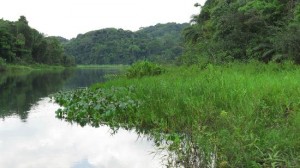Panama is one of the fastest growing and developing countries in the world, and that means lots of construction. While this is great for the economy, there are some drawbacks environmentally. Rapid and expansive construction often means pushing out certain animal populations and destroying their habitats. This is especially true in the case of Panama’s mangrove forests and other wetland areas. Panama is one of the most bio diverse countries in the world, and the city, despite its modern façade, contains nearly a quarter million acres of vital wetlands. This is why the need to protect them is greater than ever.
Why now?

What does the new Wetland Protection Law entail?
According to government documents the new law will ban construction in an 85,000-hectare-stretch (210,000 acres) of the Bay of Panama. This will both keep the mangrove forests safe, and maintain a stable habitat for the local Western Sandpiper bird population; a population that accounts for 30% of the species worldwide. Roughly 1 million birds migrate to the Bay of Panama each year, and without serious protection of the wetlands, their habitat is threatened. There are also a number of other aquatic species and mammals that call the wetlands home, and this protection act aims to help them as well.
Varela’s Environmental Leadership
In the first year of his presidency, Juan Carlos Varela has made it clear that environmental protection, and ecological responsibility be prominent in everything Panama does. This will be an uphill battle, however, as Panama has largely ignored environmental concerns in lieu of fast expansion in the past. Varela is now challenged with keeping up Panama’s fast pace of growth, while balancing it with the need for ecological protection. He is also helping to push forward a $700 million water treatment and cleaning project, which will (hopefully) make the bay swimmable by 2017.
This new wetland protection law will not only protect the area from construction development, but will also prevent logging, dredging, and any type of soil removal along the protected area. Varela hopes that this law will not only protect the wetlands for the future, but also reverse some of the damage done to the bay in the past 50 years or so. According to United Nations statistics, Panama lost nearly 60 percent of all of its mangrove forests between 1969 and 2007. Since 2007, that number has decreased year-by-year, however during the Martinelli administration, very few steps were made to reverse the trend.
In order to take Panama to the next level as a sustainable country, capital city, and global competitor, environmental protection is key. So far, Varela has made a big step in the right direction with this law. Let’s see if he can keep it up!